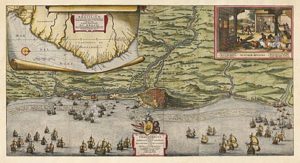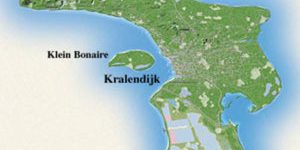Dutch in Colonial Brazil
No comments yet encyclopedia.com – One of the great tragedies in the history of Brazil took place between 1624 and 1654 when the Dutch West India Company attempted to occupy Portuguese America, with enormous loss of life and property and massive dislocation of populations. At least 10,000 Dutchmen, Germans, Frenchmen, and other Europeans in the service of the company lost their lives, as did a similar number of opposing Portuguese, Spaniards, and Italians. Untold numbers were maimed. In addition, at least a thousand Amerindians and possibly an equal number of blacks also died fighting for one side or the other. More than a thousand ships were captured or sunk during the thirty years of conflict. Several hundred sugar mills were destroyed, countless cane fields burned, and numerous oxen killed. Tens of thousands of inhabitants of northeastern and northern Brazil were uprooted and forced to march southward to Bahia or Rio de Janeiro, flee into the interior, or return to the Iberian Peninsula. The economy of northeastern Brazil was seriously disrupted, and many decades elapsed before parts of that region were restored to normalcy.
encyclopedia.com – One of the great tragedies in the history of Brazil took place between 1624 and 1654 when the Dutch West India Company attempted to occupy Portuguese America, with enormous loss of life and property and massive dislocation of populations. At least 10,000 Dutchmen, Germans, Frenchmen, and other Europeans in the service of the company lost their lives, as did a similar number of opposing Portuguese, Spaniards, and Italians. Untold numbers were maimed. In addition, at least a thousand Amerindians and possibly an equal number of blacks also died fighting for one side or the other. More than a thousand ships were captured or sunk during the thirty years of conflict. Several hundred sugar mills were destroyed, countless cane fields burned, and numerous oxen killed. Tens of thousands of inhabitants of northeastern and northern Brazil were uprooted and forced to march southward to Bahia or Rio de Janeiro, flee into the interior, or return to the Iberian Peninsula. The economy of northeastern Brazil was seriously disrupted, and many decades elapsed before parts of that region were restored to normalcy.
Initially, Dutch contacts with Portuguese America were peaceful. By the latter decades of the sixteenth century, despite Spanish Hapsburg prohibitions against foreign trade with Brazil, an increasing number of Dutch ships and crews were helping carry cargoes, especially textiles, from Europe to Brazil, returning with sugar and brazilwood. By 1621 an estimated ten to fifteen ships were built annually by the Dutch solely for the Brazil trade. By that time, the Dutch controlled about one-half to two-thirds of the carrying trade between Portuguese America and Europe. The end of the twelve-year truce (1609–1621) between the Spanish Hapsburgs and the United Provinces of the Netherlands was marked by the founding of the Dutch West India Company (1621). With governmental support, the Dutch West India Company and explorers began colonization efforts in Portuguese America, Chile, the Caribbean, Suriname, and the Northeastern United States.
Read more: https://www.encyclopedia.com/humanities/dutch-colonial-brazil
You May Also Like
Comments
Leave a Reply








